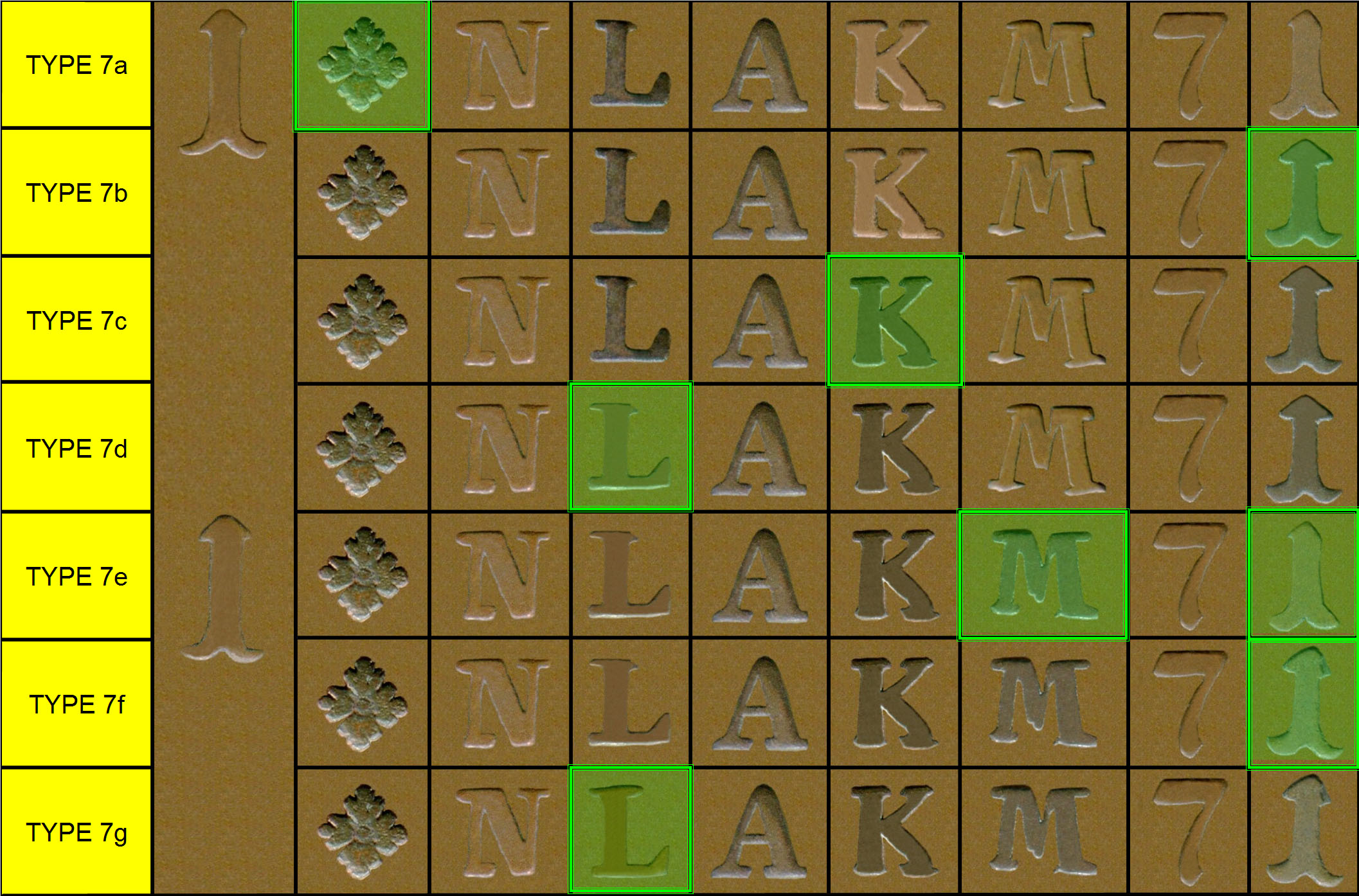Altona
Altona Type 1
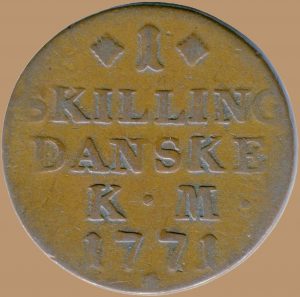
The Altona Type 1 variations are the first and original versions of the 1 skilling 1771. The dies (12 reverse and 8 obverse) were made by Johan Henrik Wolff (as were all Altona variations), and the mintage was limited to just over a million coins during the 1771-1773 period. It is characterized by the small “1” and the square diamond-like rosettes at the top.
The first two obverse dies are also characterized by the Cs that form into spirals. However they differ by having the "7"-letters pointing in different directions: AO101 pointing down and AO102 pointing upwards. The reverses show a development (marked in green below) where the intercept of the "K" moves upwards in Type 1b. I addition, the size and shape of the "7" seems to become somewhat larger.
Atlona Type 1c is a variation that seems to be out of place, and consists of only one coin: A121. If it didn’t share obverse with contemporary coins (Type 1b), it could have been placed among Altona Type 2. This coin is probably best known for the extra dot after DANSKE, but the really peculiar thing is that we can see a change in three fonts that also appears in Altona Type 2 seven years later: The “N” with smaller end lines, the “M” with the thinner and longer top edges (and the left part of the right leg partly removed) and the "1"s with somewhat shorter and thicker “feet”. This "mystery" is however explained by the fact that Wolff was instructed to make an additional 16 pairs of dies during the early parts of 1773. These dies were never used but just warehoused for potential future mintage.
Fonts

Altona Type 2
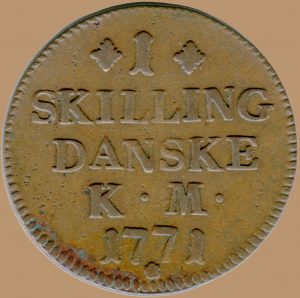
While there had been minted more than 6 million 1771 skilling coins at the Copenhagen Mint during the years 1773-1775, the 1771 skilling mintage at Altona didn't start up again until 1779. However, during the period 1779-1781, Altona took over as the main producer of 1 skilling coins with more than 6 million coins struck.
It clearly looks like the mintage processes at Altona and Copenhagen were different. While Copenhagen followed some sort of chronological order or queuing system for the dies, the Altona Mint must have had some sort of die pool where they just used the freshest die available. We can see this quite clearly from the 1779-1781 mintage, where Altona Type 2-4 were minted using 74 pairs of dies. Here, coin mixes between Type 2/Type 3 is the rule rather than the exception, and we've even noticed a Type 3 die who have been mixed with both Type 2 and Type 4 (AO352).
Just as for Altona Type 1, Altona Type 2 is characterized by the small “1” at the top. It differs though by the top rosettes that are missing two leaf spikes and thereby is pointing down in Type 2a and 2b, pointing right in Type 2c and pointing left in Type 2d. As we can see from the table below, the “L” develops into a letter where the top edge line is cut at the right side from Type 2b. Altoghether, we've encountered 12 obverse and 11 reverse dies of Altona Type 2. All dies were made during the early parts of 1773 and then warehoused for more than six years. This is also why we see such a close resemblence to the obverse/reverse of Altona Type 1.
Fonts
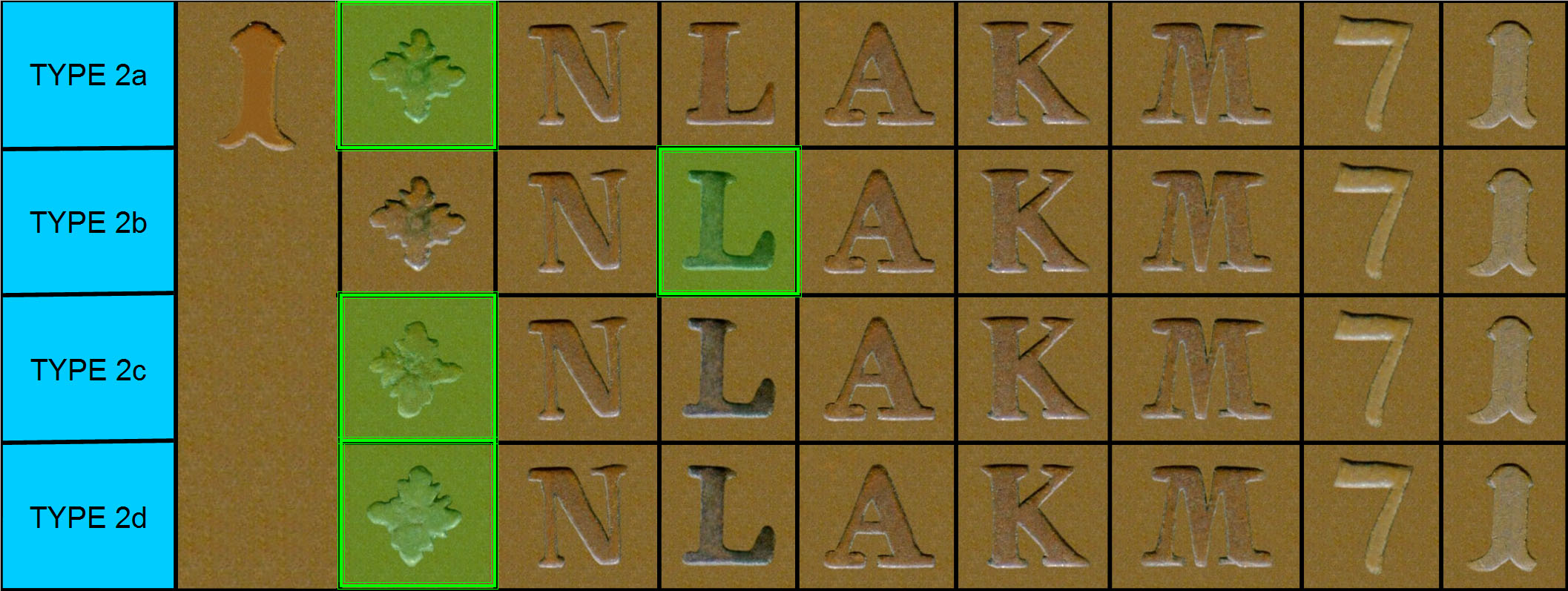
Altona Type 3
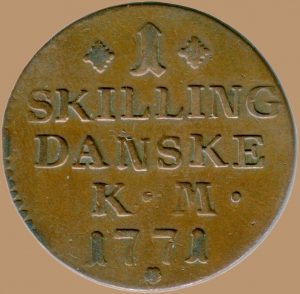
While the difference between Altona Type 1 and Type 2 is subtle, Wolff made clear changes with both the obverse and reverse dies for Altona Type 3. The “C”s at the obverse now starts and ends with a more curly circular shape. There are more space between the crown pearls, and the “7” letters are longer and rest on the lower part of the “C”s. The reverse dies also change quite substantially: The “1” at the top increases in size by getting thicker, somewhat higher and with wider “feet”. The “N” assumes a broader end line at the left leg and starts leaning to the right, the “K” gets wider and the “M” reverts to the old shape from Type 1a and 1b (!) From Type 3b the broad end line at the left leg of the “N” and the end line at the top right of the “K” disappears. The “A” also gets less pointy at the top. From Type 3c the left "foot" of the top "1" is shortened and the end line at the top right of the “N” disappears. Further minor changes are shorter/narrower “feet” of the lower “1”s, an uneven cut at the left side of the right leg of the “A” and a removal of the left part of right leg of the “M”.
The Altona Type 3 mintage (37 obverse and 23 reverse dies) was probably carried out in very late 1779 and the first quarter of 1780. The dies were to a great extent mixed with Altona Type 2 dies.
Fonts
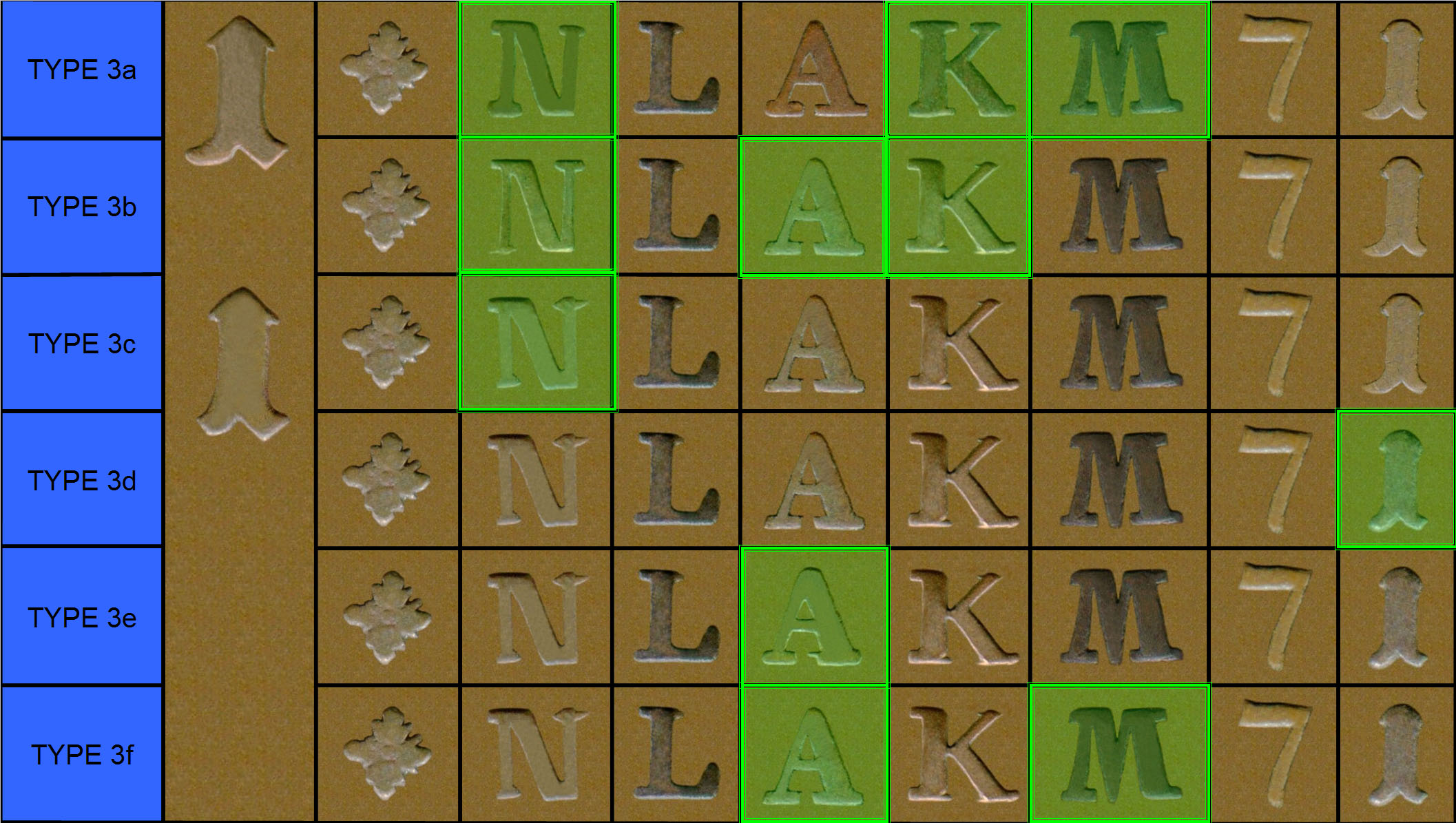
Altona Type 4
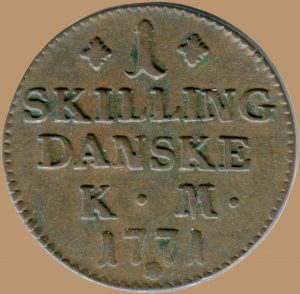
Altona Type 4 is characterized by the longer and thinner top “1” with wide “feet” and where the top has a hint of an arrowhead. The “M” still has a long middle leg and the bottom “1”s are straight with no clear arrowheads. Wolff also made the “N”s with more complete end lines. We can see from the table below that the top "1" changes already from Type 4b to a thinner shape With narrower "feet" and with a less pronounced arrowhead. The “A”s developed back to the shape with the uneven cut at the right leg. From Type 4c-4e, the “M”s reverted back to the Type2 “M” with the thinner and longer top edges. From Type 4d, the “K” changes back to the slimmer font with marked top lines, much like the “K”s from Type 1 and Type 2. The “7” changes to a smaller letter with somewhat thicker lines from Type 4e. Finally, at Type 4f, the “M” changes back to the variation with shorter and thicker top edges.
We have found 24 obverse and 31 reverse dies from Altona Type 4. There were not that many coin mixes between Type 4 and Type 2/Type 3. We’ve actually only seen evidence of two Type 3 obverse dies (AO352 and AO368) that were mixed with type 4 reverse dies during the mintage process. We believe that the Type 4 dies were made in the period between March 1780 and July 1781.
Fonts
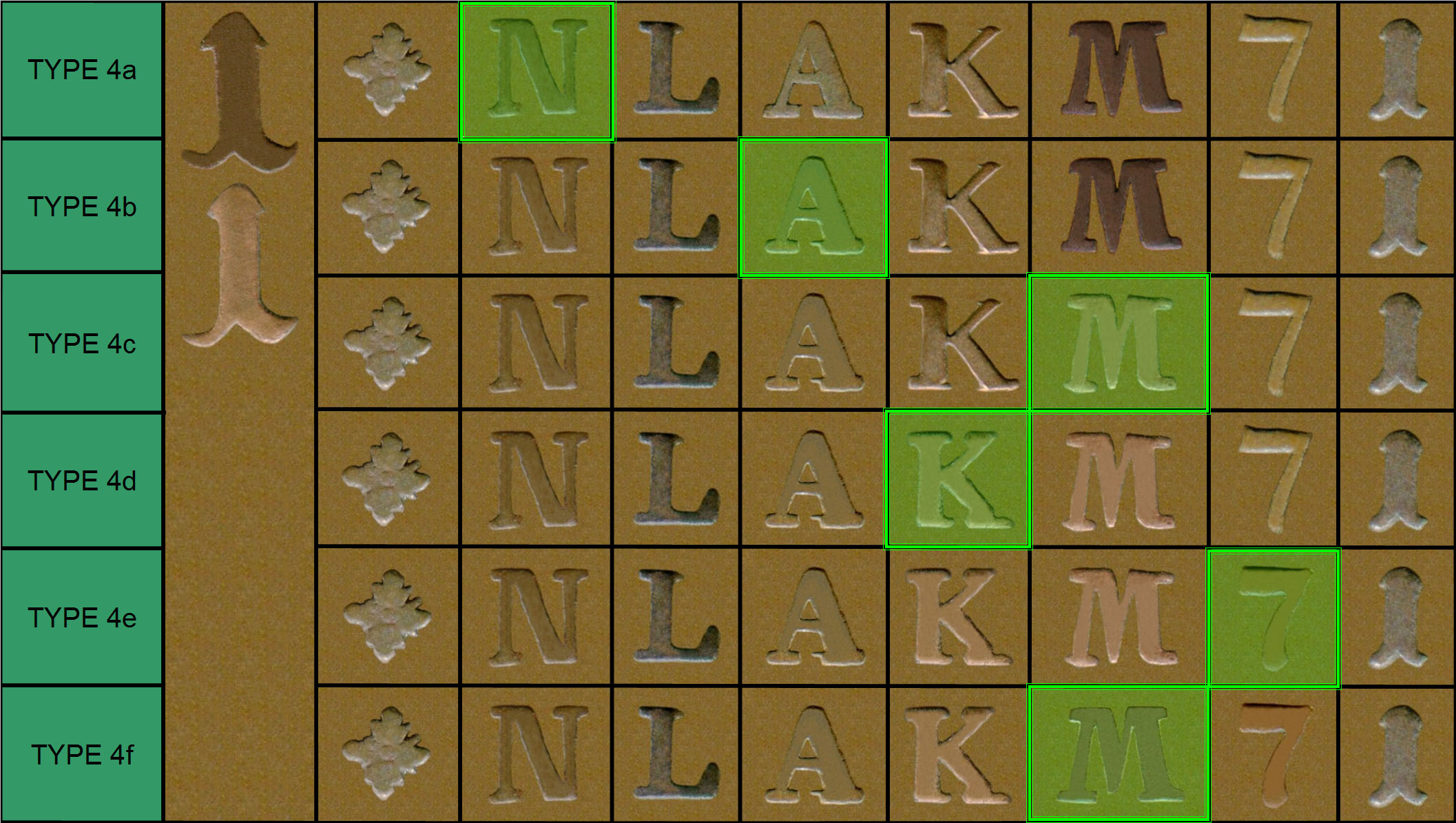
Altona Type 5
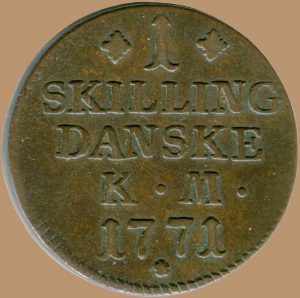
The 1771 skilling mintage took a breather in Altona from the second half of 1781, as did the mintage in Copenhagen. In november 1782, the production started up again with a scale quite similar to that of 1780. The timing was therefore not optimal when Wolff had a sick leave during the second half of 1783. To help out with an adequate number of dies, 36 pairs made by Johan Ephraim Bauert were sent from Copenhagen. We can see visible results of this, with 15 variations that consist of mixes between Altona and Copenhagen dies:
A503-D, A604-C, A633-B, A634-B, A634-C, A703-B, A705-C, A705-D, A706-B, C545-A, C562-A, C604-A, C606-A, C607-A, C608-A
Altona Type 5 is characterized by the arrow-formed lower "1"s in combination with the top rosettes that still lack the two leaf spikes. Several letters have changed since 1781: The "N" with the long left top edge, the "A" with a straight bottom line cut, the somewhat larger and thinner "7" and the "M" where the right leg again is cut on the left side and the top left is partly removed from Type 5b and onwards. We have registered 22 obverse and 16 reverse dies from Altona Type 5. Most dies were used during the last part of 1782 and into the first few months of 1783. We can however to some extent see reusage of Type 5 dies stretching into the second half of 1783.
We see a clear development of the lower "1"s: In Type 5a and 5b, the arrowhead is quite broad and flat but from Type 5c, we see that the arrowhead becomes less pronounced. From Type 5d and onwards, the arrowhead shape becomes taller and the "feet" take a more circular shape.
From Type 5e we have another significant change: the middle leg of the "M" is cut to make it shorter than the left and the right leg. It is also worth noticing that Wolff cuts the "M" in two different ways, depending on the "M":  For the "M"'s with shorter and thicker top edges, like Type 5e, the cut will be fairly straight and horizontal (2a and 2b above). For the "M"s with longer and thinner top edges, like Type 6a, the middle leg will be created by two lines of different thickness, the thinner line being the longest (1a and 1b above). It's interesting though that Wolff constantly varies between these two archetypes of "M"s and in this way gives an impression that there are two die cutters working at Altona. In fact he's actually juggling between them during the entire mintage period of 15 years, from 1771 to 1785.
For the "M"'s with shorter and thicker top edges, like Type 5e, the cut will be fairly straight and horizontal (2a and 2b above). For the "M"s with longer and thinner top edges, like Type 6a, the middle leg will be created by two lines of different thickness, the thinner line being the longest (1a and 1b above). It's interesting though that Wolff constantly varies between these two archetypes of "M"s and in this way gives an impression that there are two die cutters working at Altona. In fact he's actually juggling between them during the entire mintage period of 15 years, from 1771 to 1785.
Fonts
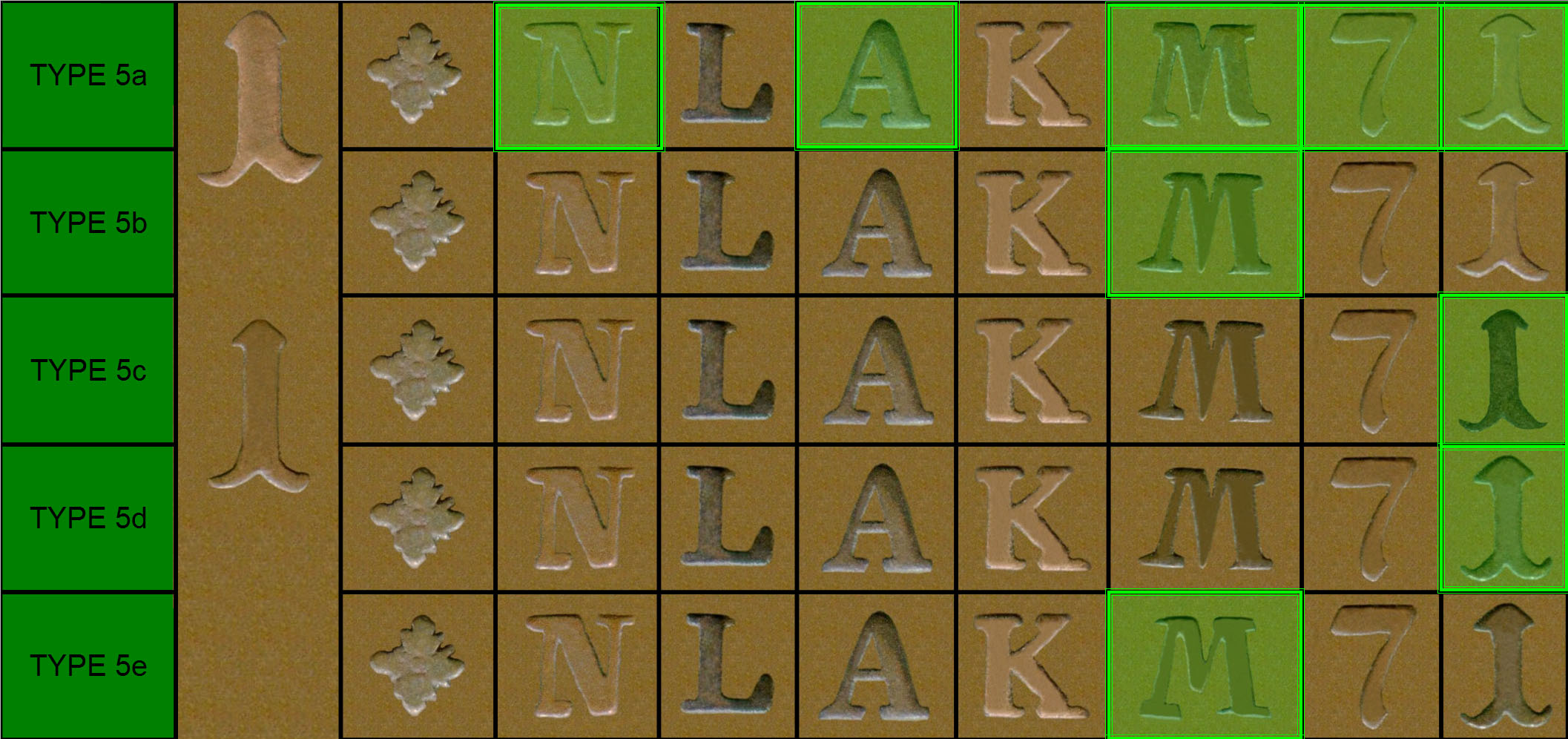
Altona Type 6
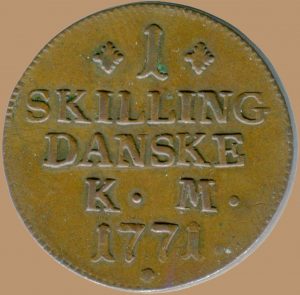
Altona Type 6 is a direct continuation of Type 5 and is characterized by the lower "1"s that now lose their clear arrowhead shape. While they still show hint of an arrowhead, it's now much less pronounced. Their "feet" also lose their circular shape in Type 6b and become shorter and thicker. From Type 6c, the "M" changes back to the 2nd archetype from the description above. There were made 24 obverse and 40 reverse dies with Altona Type 6 attributes. We believe that about half of them were used during 1783 and the remainder during the first half of 1784. We also esimate that close to 4,5 million coins were minted during this period by dies sent from Copenhagen (Copenhagen Type 4d, Type 4e and Type 5a).
Fonts

Altona Type 7
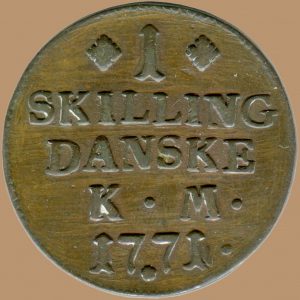
Altona Type 7 is characterized by a significant change of the two top rosettes. Just like Altona Type 1, they now again become more diamond-like and symmetrical about both the horizontal and vertical axis. From Type 7b, the lower “1”s assume the arrowhead shape, quite similar to that of Type 5d-5f (except for the shape of the “feet” that is less circular). There is a clear tendency that the “K”s lose the pronounced end line of the lower right leg from Type 7c, but this is a rule with exceptions. The “L” however changes shape from Type 7d to a letter with a flatter “hook”. From Type 7g, this letter also becomes somewhat taller.
From Type 7e, Wolff again decides to change the shape of the lower “1”s away from the “arrowhead”-style. He first reverts to the arrowless shape he used during the Type 6 mintage, but changes his mind and settles with a new “half arrowhead” font from Type 7f. Another striking feature of the Type 7e-7g dies is that he also changes the shape of the “M” back to first archetype with thinner and longer top edges. The top "1" also assumes somewhat narrower "feet".
The Altona Type 7 mintage was done using a limited amount of dies (69 obverse and 86 reverse dies), which makes the productivity high but the collector value low. We estimate that the Type 7 dies contributed to just above 20% of the total 1771 skilling mintage, which gives an average productivity of more than 150k coins per die. While some of the variations are quite rare, there are examples of very common variations with more than 250k minted samples (our estimate) such as:
A711-A, A770-A, A787-A, A795-A
All Altona Type 7 coins were minted during the period from mid 1784 until the production finally culminated in July 1785.
Fonts
